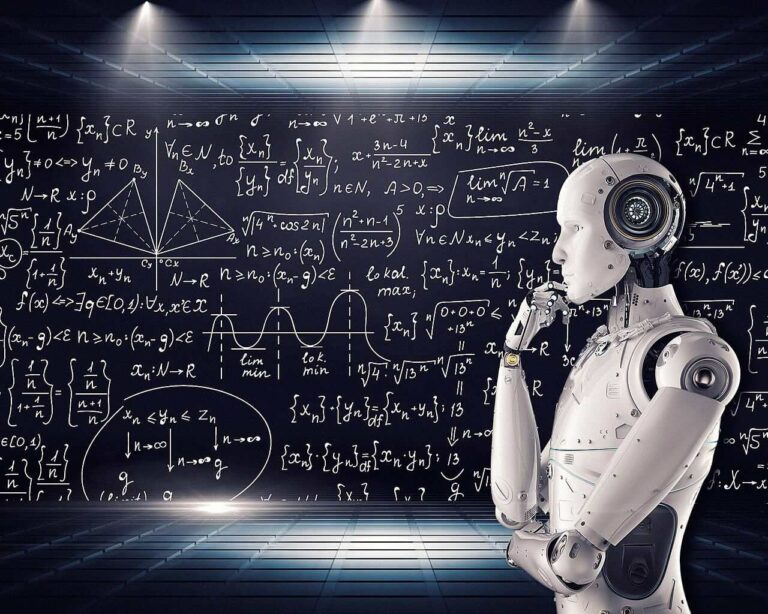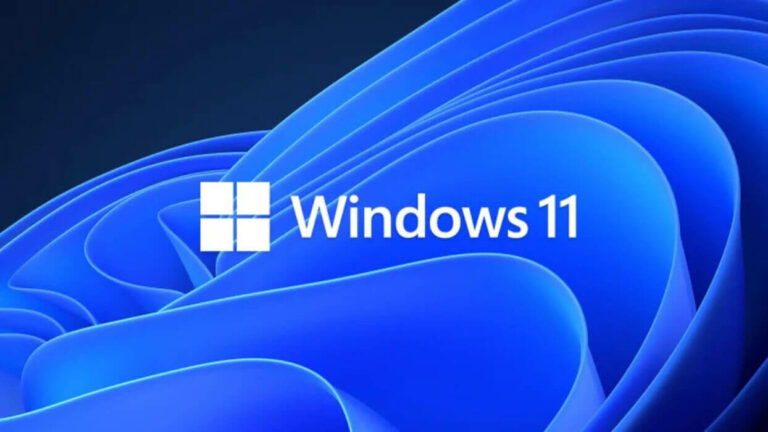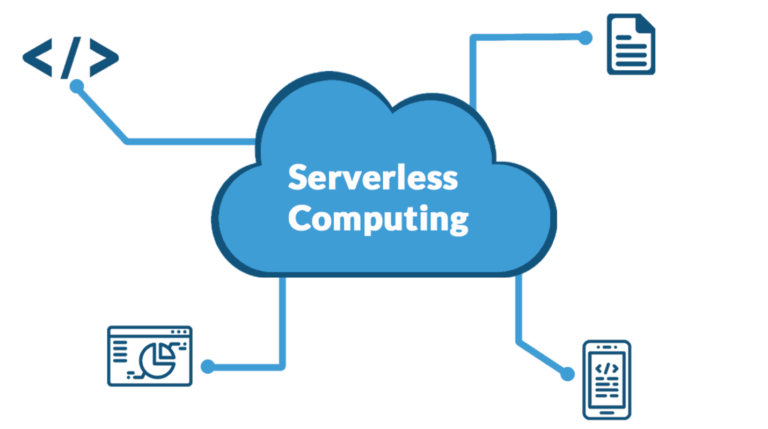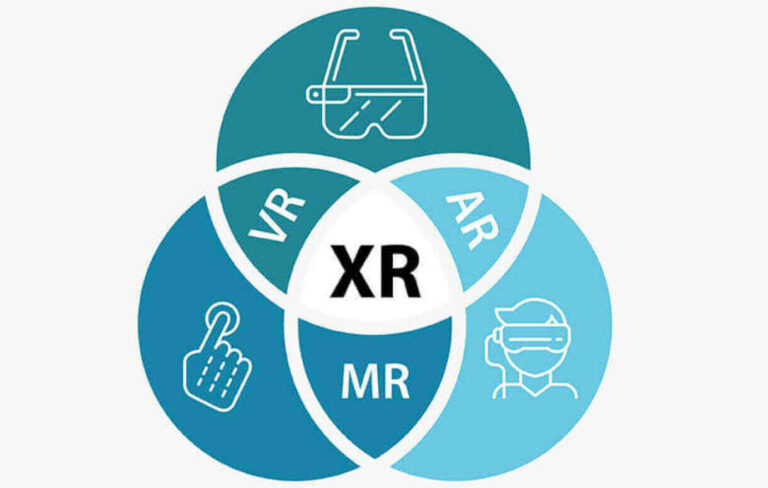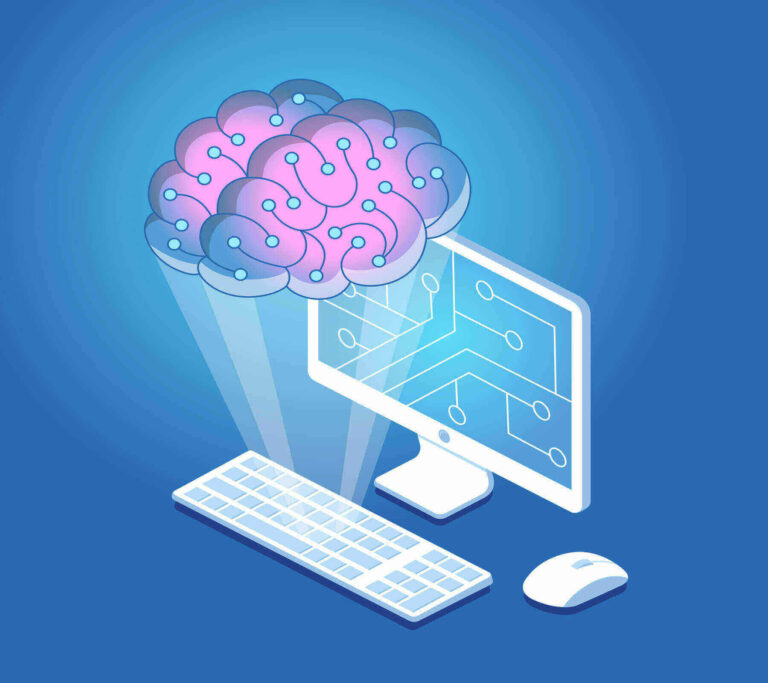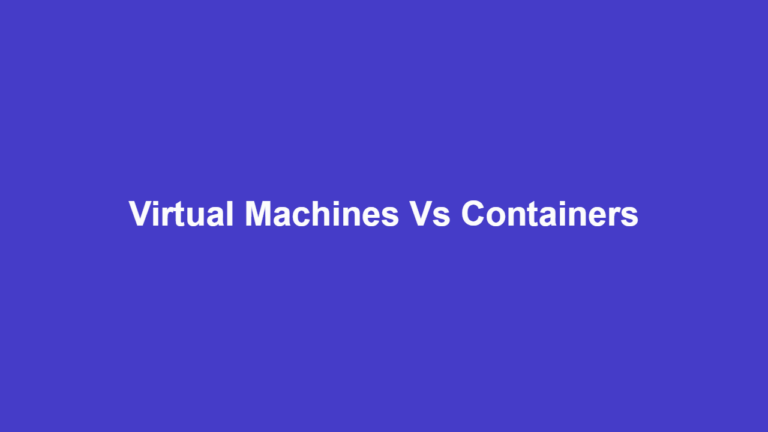Spatial Computing: Meaning and Benefits
Curious about Spatial Computing? Join us to explore this fascinating realm where the physical and digital worlds converge with new potentials to reshape human-computer interactions, experiences, and industries.
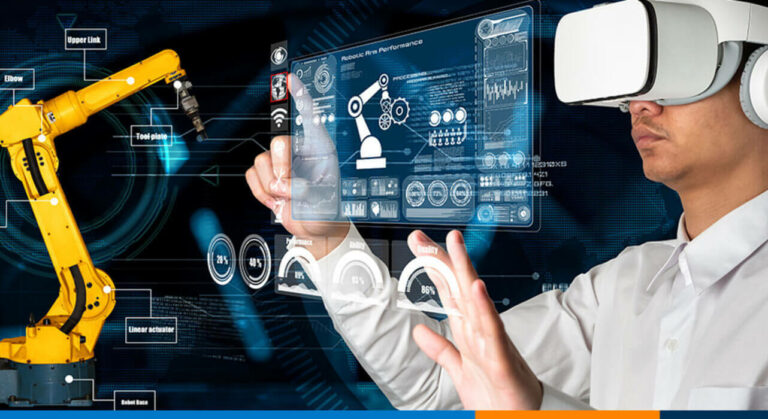
Spatial computing is a system that incorporates natural human actions as input for computer control while using the perceived 3D space as a canvas for drawing text, images, and videos.
These natural human actions include hand gestures, speech, head movements, and physically moving from point A to B. A spatial computer, therefore, blends into the physical environment of its user.
This post looks at spatial computing technology and what it holds for the future of human-computer interactions. It sheds light on the benefits, challenges, applications, and emerging trends in the market.
What Is Spatial Computing?
Spatial computing is an evolving concept that is blurring the boundaries between the real and virtual worlds using new sets of hardware. Spatial computing is not a specific technology, per se. Rather, it is an umbrella term that combines numerous technologies – including Virtual Reality (VR), Augmented Reality (AR), Mixed Reality (MR), Internet of Things (IoT) – into a technological revolution.
Market.us estimates the current spatial computing and IoT market at $120 billion, with projections to grow to $620 billion by 2032. Prophecy Market Insights (PMI), however, estimates the market at $87.5 billion, with a 2032 estimate of $516 billion.
By offering a new approach to the human-computer interface, a spatial computer enables its user to achieve many benefits that would otherwise not be possible. This includes the enhanced user experience of 3D immersion for education, architecture, industrial designs, and so on. Then, there are games and other types of entertainment, as well as other upcoming solutions.
Spatial computing also has challenges that make its mass adoption more difficult. One of these challenges is the high cost of the specialized hardware often needed for a spatial computer, which in turn, leads to lower levels of use, experience, research, and development that slows the overall progress in the industry.
How Does Spatial Computing Work?
Spatial computing differentiates itself from other computing approaches with its focus on the user’s environment. A spatial computer seeks to consistently recreate its output display based on the user’s location and orientation.
While there is no fixed approach to creating a spatial computer, the following steps are necessary to achieve the goal of constantly evolving feedback based on the user’s physical activities.
- Sensing The Environment: Spatial computers contain sensors and cameras that capture information from the user’s environment for further processing. Assuming the user is putting on a headgear, then this headgear will contain sensors to know when the user is facing south, north, and so on. Depending on the application, the device might further pick up images from the environment for further processing. There are also depth cameras that make it easy to identify and measure 3D objects.
- Mapping The Environment: The next step after capturing data through sensors is to create a 3D representation of the user’s environment. This process is called spatial mapping and is useful for many reasons – including motion planning, collision avoidance, and better blending of the physical and virtual worlds.
- Overlaying Digital Content: Depending on the application, the digital content is now overlaid on the real-world view. Virtual reality systems will overlay the entire spatial map with all its objects, images, and text, while augmented reality and mixed reality systems will attach the needed virtual content at specific spots.
- Handling User Input: Now that the interface is displayed and live, the system goes into a loop awaiting user inputs. These inputs can come from physical movements, hand gestures, voice commands, special controllers, or any other input methods that the user employs to navigate through the system or manipulate its objects. Each user input is caught and appropriately handled.
- Real-Time Adjustments: The final step is the re-rendering of the digital content to include the new user inputs or their effects. This might range from small events like animating a clicked button to more extensive operations like switching modes, changing the scenery, loading a new sub-routine, and so on.
Benefits Of Spatial Computing
There are many benefits of spatial computing for personal and business uses, and here are the major ones.
- Immersive Experience: Both virtual and augmented reality feedback with the capability of more natural controls can offer computer users a much better experience than is possible with other forms of computing. This includes work, education, entertainment, and other uses. The Apple Vision Pro, for instance, allows you to position your apps in your own spaces at preferred sizes.
- Real-World Awareness: Spatial computing maintains real-world awareness by representing the user’s physical environment. This feature makes it easy to combine computing with other physical tasks like riding a bicycle.
- Better Understanding: By providing interactive 3D simulations and models in a natural way, spatial computing makes it easier to understand complex concepts. This benefit makes training and education applications more effective.
- Enhanced User Interactions: Spatial computing is not limited to keyboard, mouse, or touchpad inputs because it utilizes hand gestures, voice commands, eye, and physical movements as input.
- Better Visualizations: Designers, engineers, and architects can better visualize their products and creations in an immersive 3D environment using spatial computing. This benefit leads to higher productivity.
- Lower Development Costs: Virtual 3D prototyping and testing can reduce the development cost of products by making it unnecessary to develop physical prototypes.
- Innovation & Disruption: By turning the idea of what a computer is and is not on its head, spatial computing is also driving innovation to create new technologies and services that will offer better value than what is currently available.
- Remote Collaboration & Services: Spatial computing makes it easier for teams to collaborate remotely as though they were in the same physical space. This equally applies to service providers and their clients, such as with remote computer support.
- Enhanced Entertainment: Without a doubt, the market for spatial-computing-based entertainment is huge, especially for spatial (AR & VR) gaming.
- Phygital: Marketing campaigns that combine a physical and digital presence (phygital) will easily benefit from spatial campaigns.
Spacial Computing Technologies
The spatial computing movement builds on preexisting technologies and evolves new ones on its own. The industry is still developing, however, so expect more innovations in the future. Here are the current technologies and trends in the spatial computing industry.
- Hand Tracking: This is the use of hand movements or gestures as an input to the computer.
- Wearables & Haptic: Clothing items that provide input to the computer or feedback to the user.
- Voice Control: Ability to command or tell the computer what to do by speaking.
- Eye Tracking: Monitoring the eye’s direction and movements as computer input.
- Virtual Reality (VR): The display of a completely virtual world to the user.
- Augmented Reality (AR): The display or superimposition of virtual elements on physical sight.
- Mixed Reality (MR): A combination of AR and VR display modes.
- SLAM: Simultaneous localization and mapping.
- 3D Camera: To pick up object sizes and distance from the user. Apple’s Vision Pro lets you capture spatial images and videos in 3D immersion.
- Spatial AI: The integration of artificial intelligence into spatial-computing applications to automatically do lots of stuff.
- Spatial Mapping: The creation of a digital 3D map of the user’s environment.
- Spatial Audio: A 3D soundscape that enhances the immersive experience.
- Spatial Collaboration: The interaction of multiple users in a shared physical space with digital content.
- Spatial Analytics: The process of analyzing spatial data for insights.
- Edge Computing & 5g: Two technologies to greatly improve performance in spatial computing by reducing latency and bandwidth.
Applications Of Spatial Computing
Here is a quick list of the different industries where you can apply spatial computing concepts or create disruptive applications.
- Personal Computing: From browsing the web to watching movies, snapping pictures, chatting, and attending video meetings, Apple’s Vision Pro is pioneering personal spatial computing with its visionOS.
- Healthcare: From medical training to surgical assistance, and remote consultations, spatial computing can help to provide more realistic simulations and detailed, accurate information about a patient.
- Design: From product designers to architects and city planners, spatial computing can provide a more productive and efficient method of creative work. It can also offer better virtual walk-throughs, product presentations, and art exhibitions.
- Education: Spatial computing is the ideal technology for interactive learning applications, as it makes it easy to explore subjects or recreate historical events using 3D immersion.
- Gaming & Entertainment: From immersive games to mixed reality solutions for pictures, sound, and videos, the applications of spatial computing in gaming and entertainment are vast.
- Retail: Virtual try-ons and product visualizations can enable customers to see how clothing, make-up, and accessories might look on them.
- Manufacturing: Prototyping, engineering costs, and time can be effectively reduced with spatial computing.
- Real Estate: Potential renters and buyers can virtually tour properties that they are interested in. Plus, furnishing applications can help to showcase how the properties may look when well-furnished.
- Tourism: Interactive augmented reality guides can offer good value to tourists with detailed information about landmarks and other interesting places.
Challenges Of Spatial Computing
The ongoing evolution of spatial computing also has its challenges, as designers and builders try to figure out exactly what works and what doesn’t, while building tomorrow’s spatial computer. Here are the major challenges.
- Security: All computing or technological systems have one security flaw or the other. This is inevitable. So, developers can only hope to discover and solve security issues before they become public.
- Cost: Spatial computing hardware is relatively expensive compared to desktops and smartphones. This limits its applicability to certain industries, users, technical, and educational purposes.
- Programming Challenges: As a new approach to computers, spatial computing presents new programming challenges, such as accurate tracking, realistic rendering and display of output, data security, and other required skills.
- Geo-Privacy: Spatial computing relies on its user’s location to function and this raises privacy concerns.
- Ethical Considerations: Another major challenge facing spatial computing is the issue of virtual reality addiction. Take, for instance, the non-immersive smartphone, which has created elevated levels of dependency in its users. And now, consider the immersive world of spatial computing that is sure to create more addiction problems with younger users.
Notable Spatial Computing Brands
While wearable headset projects like the pioneering Google Glass have failed, here are other projects and brands that are developing spatial computing solutions.
Spatial Computing FAQs
Here are some frequently asked questions about spatial computing and its related technologies.
Q: How does spatial computing work?
A: It merges a user’s virtual and physical worlds while enabling immersive interactions through AR, VR, and MR technologies for enhanced experiences.
Q: How do AR, VR, and MR relate to spatial computing?
A: AR is augmented reality, while VR is virtual reality. Both technologies are used for spatial computing displays and can be combined as MR or Mixed Reality.
Q: Is spatial computing safe?
A: Every computing system has its risks.
Q: Will spatial computing take over desktop & mobile computers?
A: No one can predict the future. But it will surely carve its niche.
Q: Is spatial computing possible without specialized hardware?
A: Yes, you can experience basic forms with AR-enabled smartphones. But you will only get the best results with specialized hardware.
Conclusion
We have reached the end of this post on spatial computing and the future of our interactions with computers. And as you have seen, this technology is still evolving, with many exciting products still on the way.
Spatial computing is not just a technological advancement; it holds the promise of a new reality for us all. A future where the physical world and all the computing power of the virtual world are merged into one reality and placed at your fingertips like a cyborg – to do with them, what you will.
